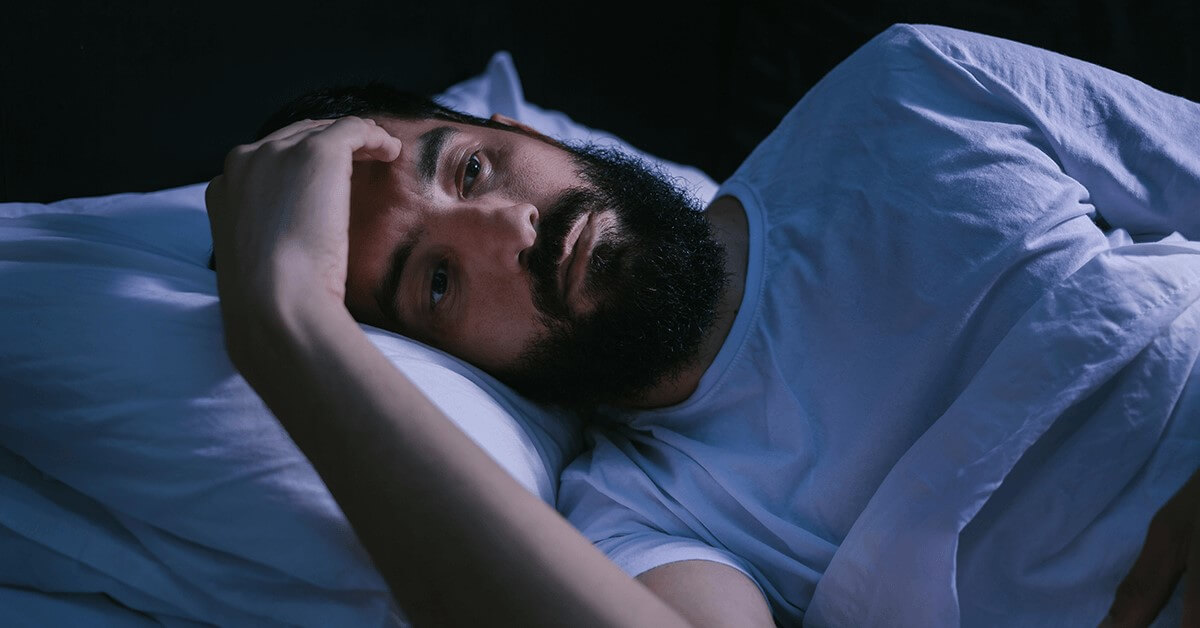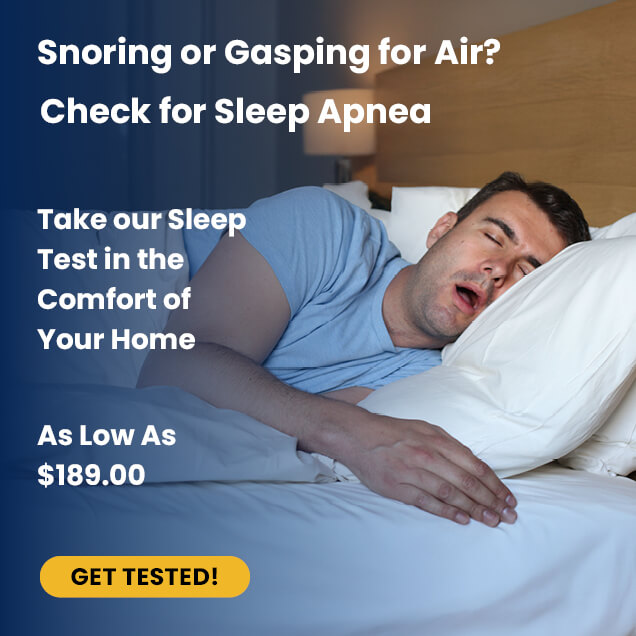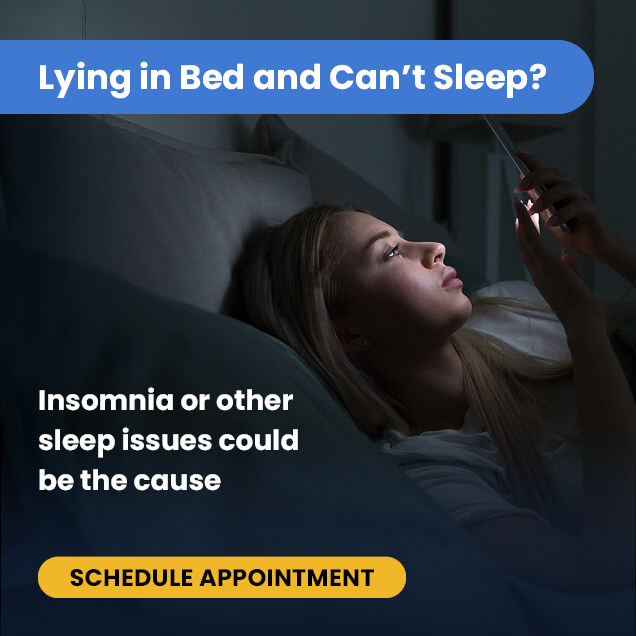Simple Movement Disorders | Simple or Single Movements | Complex Movement Disorders | REM Sleep Disorders | Risk Factors | Evaluation | Management | Differential Diagnosis
Overview
Many sleep-related, movement-causing disorders can make it difficult to get quality sleep. This classification starts with conditions exhibiting simple or minor movements (quick movements affecting only one body part) and delves into various complex behaviors.
Abnormal movements and behaviors can happen during sleep, wakefulness, or transitioning in and out of either state.
Keep reading to find out more about these sleep disorders, predisposing factors, symptoms, evaluation, differential diagnosis, and management.
Types of Sleep-Movement Disorders
Sleep-related movements, as classified by the International Classification of Sleep Disorders, are either simple or complex.
Simple movements are characterized by one single movement that affects a single part of the body and tends to occur between sleep and wakefulness.[1]
Simple or Single Movements
1) Exploding Head Syndrome
People with exploding head syndrome complain of “feeling” a loud and painless explosion inside their heads when they’re about to doze off or wake up. There is no actual movement in this case, and patients sometimes confuse the syndrome with headaches.[2]
2) Hypnic Jerks
Hypnic jerks are a benign disorder that occurs at sleep onset and can be caused by excessive caffeine intake or sleep deprivation. It comes with a frightening feeling like you’re about to fall, which causes your whole body to jerk awake from sleep suddenly.
3) Sleep-Related Leg Cramps
You know you have sleep-related leg cramps if frequent sudden and painful muscle contractions in your thigh, foot, or calf disturb your sleep at night.
4) Bruxism or Teeth Grinding
Sleep bruxism causes your jaw to contract forcefully while you’re sleeping, which in turn makes you grind or clench your teeth intermittently throughout the night. This action’s primary consequences include tooth pain, morning headaches, and facial, jaw, or neck soreness.[3]
5) Sleep-Related Myoclonus
These conditions are characterized by benign involuntary jerks during sleep onset, NREM sleep, and upon waking or soon after waking:
- Propriospinal – Jerks in the abdomen, neck, or trunk that occur during sleep onset can happen throughout the day.
- Epileptic – This is a type of seizure in children and adolescents upon waking or soon afterward.
- Benign Sleep (Infancy) – These are jerks that occur in babies during their first weeks of life, during the NREM stage. They are part of typical neurological development.
Periodic or Rhythmic Movements
Typically, periodic and rhythmic movements differ from simple movements in that they are more noticeable. They are characterized by leg and foot movements, including the head and torso.
1) Hypnagogic Foot Tremor
You can easily tell hypnagogic foot tremors apart from other leg-related sleep disorders because they occur only in one foot. The affected foot undergoes a short rapid burst of movement that lasts about 250–1000 milliseconds. The movement typically occurs at sleep onset or during NREM sleep.
2) Periodic Limb Movement Disorder
Periodic Limb Movement Disorder is the most common sleep-related disorder. It often manifests as the repetitive movement of the legs and sometimes the arms during light NREM sleep. Each episode lasts between 0.5 to 10 seconds and repeats itself after 5 to 90 seconds.[4]
Complex Movements or Parasomnias
Complex movements and parasomnias are characterized by bizarre behavior, perceptions, and movements during sleep but can be misunderstood as deliberate by others.
NREM Sleep Disorders
NREM sleep-related parasomnias can be distinctly categorized as disorders of arousal, including sleep terrors, confusional arousals, sleepwalking, and sleep-related eating disorders (SRED).
During one of these disorders, you’re caught between a state of deep NREM sleep and wakefulness. Your mind is sleeping, but the neurotransmitters responsible for wakefulness are “awake” and working. You may become confused and talk, run, walk, or shout; however, your recollection of the event may be minimal.
Sleep-related eating disorder (SRED) is characterized by involuntary and recurrent binge eating, with little to no memory of the event. You may find yourself unconsciously gorging on strange foods, like raw pasta, or toxic food, like raw beef if you have this syndrome.[5]
REM Sleep Disorders
Sleep disorders associated with the rapid eye movement stage include REM sleep behavior disorder, recurrent sleep paralysis, and nightmares.
1) REM Sleep Behavior Disorder (RBD)
RBD is a parasomnia that can cause you to re-enact violent and dramatic dream scenes during REM sleep.
Ideally, the body is in a state of paralysis at the REM sleep stage, but when RBD is present, you’ll be able to move your limbs or whole body even while asleep.
Behaviors usually exhibited in RBD range from mild limb movements to violent actions, such as kicking, punching, jumping out of bed, and yelling out expletives.
RBD is commonly seen in men aged 50 and above but can also affect women and younger people. Studies show that RBD can be a predictor of Parkinson’s disease, multiple system atrophy, and dementia with Lewy bodies.[6,7]
2) Nightmare Disorder
A nightmare disorder is characterized by vivid, troubling dreams that cause fear, anxiety, and anger.
This parasomnia occurs more frequently during the second half of the sleep period during REM sleep.
Even though nightmares have no motor components and do not cause dream enactment, patients sometimes jerk awake or wake up screaming.
3) Sleep Paralysis
Sleep Paralysis (SP) occurs when the temporary paralysis of REM sleep encroaches into wakefulness, either upon waking or falling asleep.
You may feel completely awake; however, you’re unable to move your body, which leads to feelings of fear. You may hallucinate or feel pressure on your chest.
SP can sometimes be triggered by an irregular sleep-wake schedule or sleep deprivation. Other times, you may experience SP because it runs in your family.
4) Vocalization
Vocalization can occur on its own as a form of sleep talking or during the disorders of arousal (sleep terrors or sleepwalking) and RBD.
5) Panic or Dissociative Events
Psychiatric symptoms of panic and dissociation can happen during sleep, as well as during the day. Often, this disorder is linked to trauma and mood disorders.[8]
Risk/Predisposing Factors
Parasomnia symptoms can be triggered or worsened by a lot of factors, some of which include:
- Emotional stress
- Age
- Mental health disorder
- Sleep deprivation
- Poor sleep hygiene
- Post-Traumatic Stress Disorder (PTSD)
- Genetics
- Fever
- Drug or alcohol abuse before going to bed
- Medications
- Circadian rhythm disturbances (caused by changes in work shift and jet lag)[9]
Evaluation
Diagnosis of sleep-movement disorders can be based on a physical and neurological examination, symptoms, and test results.
The evaluation should include observations by loved ones, a detailed medical history, the family’s medical history, a list of medications, and a safety assessment.
Other areas and tools used for evaluation include:
- Polysomnogram, a test that involves monitoring your brain activities, eye movements, oxygen levels, heart rate, and breathing functions with a machine’s help, is commonly recommended.
- Diagnostic tests, including neuroimaging, to diagnose abnormal sleep movement and behaviors.
- Behaviors associated with RBD should be screened for Parkinson’s disease.[10,11]
Management
All abnormal movement disorders during sleep can be managed in either of these two ways:
- Identifying the triggers and eliminating or reducing them
- With medications
However, before you’re given any treatment, your doctor will ask you (and sometimes your sleep partner) questions or conduct some tests. This approach determines your condition’s severity and frequency and determines if underlying medical ailments trigger your nocturnal movements.
You may not be given drugs if you’re diagnosed with simple sleep-related movements like hypnic jerks or any form of arousal disorder (e.g., sleepwalking, sleep terrors, etc.). Your doctor will likely try to determine if inadequate sleep, insomnia, or other known triggers could be causing your sleep movements.
If you’re taking serotonergic antidepressants or short-acting hypnotic drugs, you may be advised to discontinue these medications as they are possible triggers.
Your doctor may ask you to make behavioral and lifestyle changes for parasomnia and complex sleep-related movement disorders, depending on the disorder’s cause. You may also be treated with drugs.
Differential Diagnosis
It’s imperative to assess the symptoms for a correct diagnosis. It’s possible for comorbid sleep conditions, like obstructive sleep apnea (OSA), to exacerbate sleep-movement disorders.
Periodic limb movement disorder could be mistaken for a more serious condition called restless legs syndrome (RLS), resulting in excessive daytime sleepiness.
Narcolepsy can be the primary cause of sleeplessness, hallucinations, and sleep paralysis, making a comprehensive analysis imperative for neurological health.
Conclusion
Many factors contribute to an individual’s good physical and mental health, and adequate sleep ranks at the top of the list.
Parasomnias and other disorders that cause movement during sleep can make it hard for you to sleep well or get the amount of sleep your body needs.
When this happens, you may notice unusual daytime tiredness, headaches, and sleepiness. You may also become easily irritated and notice other adverse changes in your thoughts and emotions.
In cases like this, it’s essential you find and share your concerns with a sleep doctor. Moreover, since most sleep movement disorders are treatable, getting an accurate diagnosis would help your doctor provide the right treatment for you.
References:
- International Classification of Sleep Disorders, 3rd ed, American Academy of Sleep Medicine, Darien, IL 2014. no abstract available
- Pradeep C. Bollu, P., 2021. Sleep Medicine: Parasomnias. [online] PubMed Central (PMC). Available at: <https://www.ncbi.nlm.nih.gov/pmc/articles/PMC6139852/>
- Rugh, J. D., & Harlan, J. (1988). Nocturnal bruxism and temporomandibular disorders. Advances in neurology, 49, 329–341
- Berry RB, Quan SF, Abreu AR, et al for the American Academy of Sleep Medicine. The AASM Manual for the Scoring of Sleep and Associated Events: Rules, Terminology and Technical Specifications, Version 2.6, www.aasmnet.org, American Academy of Sleep Medicine, Darien, IL 2020. no abstract available
- Baldini, T., Loddo, G., Sessagesimi, E. (2019). Clinical Features and Pathophysiology of Disorders of Arousal in Adults: A Window Into the Sleeping Brain. Frontiers in neurology, 10, 526. https://doi.org/10.3389/fneur.2019.00526
- Schenck, C. H., Milner, D. M., Hurwitz, T. D., Bundlie, S. R., & Mahowald, M. W. (1989). A polysomnographic and clinical report on sleep-related injury in 100 adult patients. The American journal of psychiatry, 146(9), 1166–1173. https://doi.org/10.1176/ajp.146.9.1166
- Schenck, C. H., & Mahowald, M. W. (2002). REM sleep behavior disorder: clinical, developmental, and neuroscience perspectives 16 years after its formal identification in SLEEP. Sleep, 25(2), 120–138. https://doi.org/10.1093/sleep/25.2.120
- Merckelbach, H., Dekkers, T., Wessel, I., & Roefs, A. (2003). Amnesia, flashbacks, nightmares, and dissociation in aging concentration camp survivors. Behaviour research and therapy, 41(3), 351–360. https://doi.org/10.1016/s0005-7967(02)00019-0
- Medicine, N., 2021. Parasomnias Causes and Diagnoses. [online] Northwestern Medicine. Available at: https://www.nm.org/conditions-and-care- areas/neurosciences/sleep-health-center/parasomnias/causes-and-diagnoses
- Vaughn, B. V., & Ali, I. (2012). Sleep and epilepsy: opportunities for diagnosis and treatment. Neurologic clinics, 30(4), 1249–1274. https://doi.org/10.1016/j.ncl.2012.08.006
- Postuma, R. B., Aarsland, D., Barone, P., Burn, D. J., Hawkes, C. H., Oertel, W., & Ziemssen, T. (2012). Identifying prodromal Parkinson’s disease: pre-motor disorders in Parkinson’s disease. Movement disorders : official journal of the Movement Disorder Society, 27(5), 617–626. https://doi.org/10.1002/mds.24996






